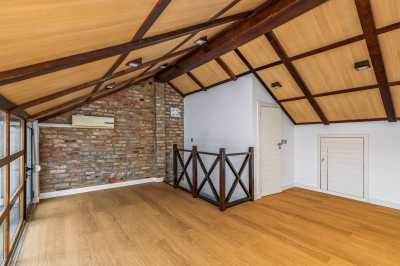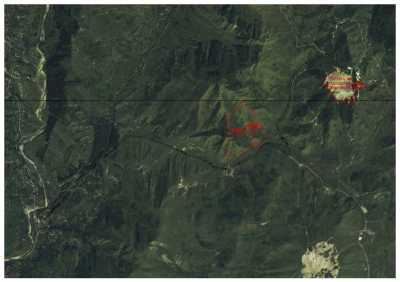The WPJ
THE WORLD PROPERTY JOURNALReal Estate Facts Not Fiction
Residential Real Estate News

International Home Buyer Activity Slides in U.S., Down 21 Percent
Residential News » Miami Edition | By Michael Gerrity | August 17, 2018 12:10 PM ET
Rising home prices and low inventory led to a decline in foreign home purchases in the United States. Total international sales totaled $121 billion during April 2017 to March 2018, a 21 percent decline from the previous 12-month period, according to an annual survey from the National Association of Realtors.
NAR's 2018 Profile of International Transactions in U.S. Residential Real Estate, found that foreign buyers and recent immigrants accounted for 8 percent of the $1.6 trillion existing home sales, a decrease from 10 percent during the 12-month period that ended March 2017.
"After a surge in 2017, we saw a decrease in foreign activity in the housing market in the latest year, bringing us closer to the levels seen in 2016," said Lawrence Yun, NAR chief economist. "Inventory shortages continue to drive up prices and sustained job creation and historically low interest rates mean that foreign buyers are now competing with domestic residents for the same, limited supply of homes."
China continues to lead in purchases
Five countries accounted for nearly half (49 percent) of the dollar volume of purchases by foreign buyers: China, Canada, India, Mexico and the United Kingdom. For the sixth consecutive year, China exceeded all other countries in dollar volume of purchases, buying an estimated $30.4 billion worth of residential property, a decrease of 4 percent from last year. Buyers from Canada came in second, with $10.5 billion worth of property, showing a more significant decline of 45 percent from the 2017 survey reference period, followed by the U.K., $7.3 billion, India, $7.2 billion and Mexico, $4.2 billion.
"The saying goes that all real estate is local, but that does not mean that all buyers are," said NAR President Elizabeth Mendenhall. "Even in this current global environment of political uncertainty, the U.S. real estate market continues to be seen as a safe, secure and profitable place to invest in property."
The survey once again showed that foreign buying activity is mostly limited to three states, as Florida (19 percent), California (14 percent) and Texas (9 percent) remained the top three destinations for foreign buyers to purchase, followed by Arizona and New York (both 5 percent).
The number of units purchased by international buyers saw a slight decrease, from 284,000 in the previous 12-month period to 266,800. China, once again, purchased the greatest number of units at 40,400. Canada comes next with 27,400 units, followed by Mexico (20,200), India (13,100) and the U.K. (9,000).
International buyers purchasing fewer, less expensive properties
International buyers typically buy more expensive properties than the average existing home. The median price for a foreign buyer was $292,400, compared to the median price for all existing homes ($249,300). Chinese buyers continue to purchase the most expensive properties, with a median price of $439,100.
Foreign buyers are more likely to purchase a home with all cash than a domestic buyer. Forty-seven percent of all international transactions were reported as all cash, compared to 21 percent of existing-home sales. Buyers from India are more likely to finance their home purchase through a U.S. mortgage (78 percent). Buyers from Canada are the most likely to purchase a home through an all-cash sale (78 percent).
Foreign buyers are most likely to purchase a detached, single-family home (66 percent), followed by a condominium (14 percent) and then a townhouse (13 percent). Only 3 percent of international buyers purchase residential land with the intent to build a home.
International buyers purchase property for a variety of reason, the most frequent (52 percent) being as a primary residence. Indian buyers were the most likely to purchase the property for primary residence (86 percent), while Canadian buyers were the most likely to purchase the property as a vacation home (40 percent). Among the top five purchasing countries, Chinese buyers were the most likely to purchase a house for student housing.
Sign Up Free | The WPJ Weekly Newsletter
Relevant real estate news.
Actionable market intelligence.
Right to your inbox every week.
Real Estate Listings Showcase

$1,475,000
Townhome For Sale
Phoenix, Arizona

€800,000
Apartment For Sale
Lisboa, Portugal

$2,620,000
Home For Sale
Tarzana, California

$1,400,000
Vacation Villas For Sale
Lowlands, Trinidad and Tobago

49,000,000 THB
Villa For Sale
Hua Hin, Thailand

$291,264
Home For Sale
Dubai South, United Arab Emirates

$1,200,000
Residential Land For Sale
Puerto Escondido, Mexico

€240,000
Home For Sale
Central Istria, Croatia

5,300,000 CAD
Home For Sale
Mission, Canada

$1,350,000
Mixed Use For Sale
Huaraz, Peru

$8,195,000
Home For Sale
Isle of Palms, South Carolina

€1,600,000
Residential Land For Sale
Scortoasa, Romania
Related News Stories
Residential Real Estate Headlines
- More Americans Opting for Renting Over Homeownership in 2024
- BLOCKTITLE Global Property Tokenization Platform Announced
- Small Investors Quietly Reshaping the U.S. Housing Market in Late 2024
- Greater Miami Overall Residential Sales Dip 9 Percent in November
- U.S. Home Sales Enjoy Largest Annual Increase in 3 Years Post Presidential Election
- U.S. Housing Industry Reacts to the Federal Reserve's Late 2024 Rate Cut
- U.S. Home Builders Express Optimism for 2025
- Older Americans More Likely to Buy Disaster-Prone Homes
- NAR's 10 Top U.S. Housing Markets for 2025 Revealed
- U.S. Mortgage Delinquencies Continue to Rise in September
- U.S. Mortgage Rates Tick Down in Early December
- Post Trump Election, U.S. Homebuyer Sentiment Hits 3-Year High in November
- Global Listings Aims to Become the Future 'Amazon of Real Estate' Shopping Platform
- Greater Las Vegas Home Sales Jump 15 Percent in November
- Ultra Luxury Home Sales Globally Experience Slowdown in Q3
- World Property Exchange Announces Development Plan
- Hong Kong Housing Market to Reach Equilibrium in Late 2025
- Construction Job Openings in U.S. Down 40 Percent Annually in October
- U.S. Mortgage Applications Increase in Late October
- World Property Markets, World Property Media to Commence Industry Joint-Venture Funding Rounds in 2025
- New Home Sales Hit 2 Year Low in America
- U.S. Pending Home Sales Increase for Third Consecutive Month in October
- Pandemic-led Residential Rent Boom is Now Fizzling in the U.S.
- Emerging Global Real Estate Streamer WPC TV Expands Video Programming Lineup
- 1 in 5 Renters in America Entire Paycheck Used to Pay Monthly Rent in 2024
- U.S. Home Sales Jump 3.4 Percent in October
- Home Buyers Negotiation Power Grows Amid Cooling U.S. Market
- Canadian Home Sales Surge in October, Reaching a Two-Year High
- Greater Orlando Area Home Sales Continue to Slide in October
- U.S. Mortgage Credit Availability Increased in October
- U.S. Mortgage Rates Remain Stubbornly High Post Election, Rate Cuts
- Construction Input Prices Continue to Rise in October
- BETTER MLS: A New Agent and Broker Owned National Listings Platform Announced
- Home Prices Rise in 87 Percent of U.S. Metros in Q3
- Caribbean Islands Enjoying a New Era of Luxury Property Developments
- The World's First 'Global Listings Service' Announced
- Agent Commission Rates Continue to Slip Post NAR Settlement
- Market Share of First Time Home Buyers Hit Historic Low in U.S.
- Greater Palm Beach Area Residential Sales Drop 20 Percent Annually in September
- Mortgage Applications in U.S. Dip in Late October





